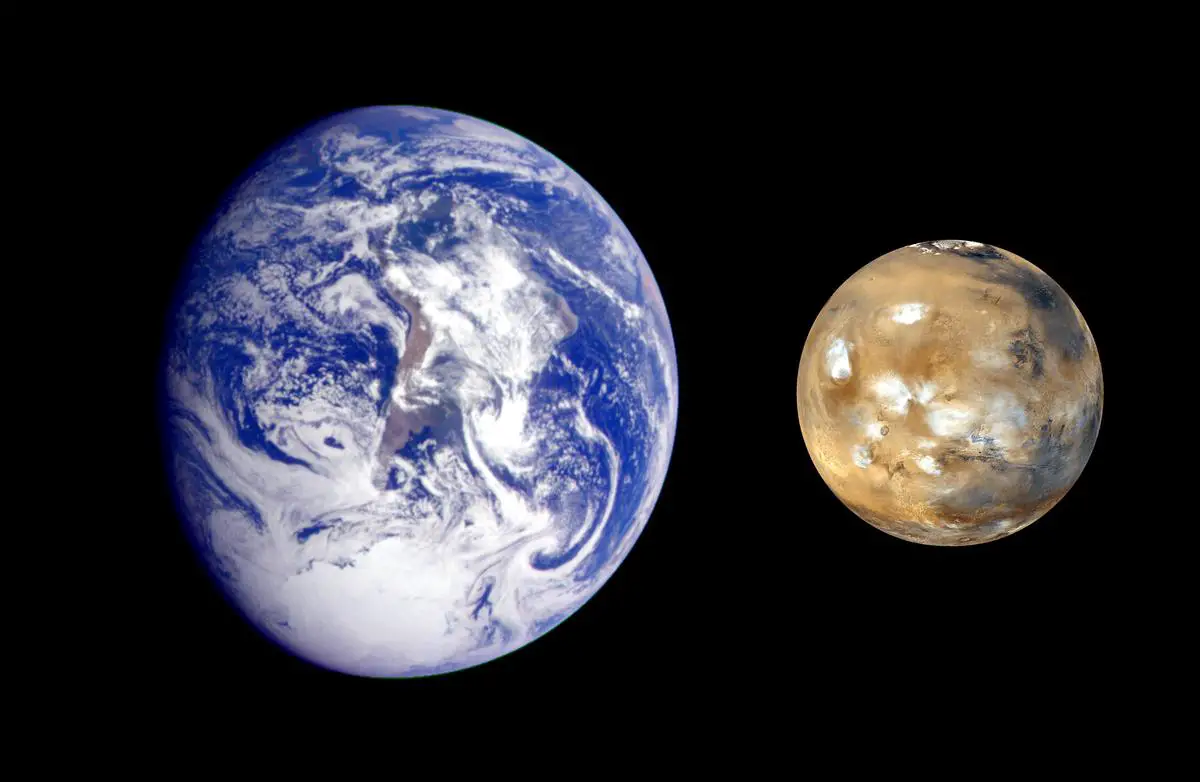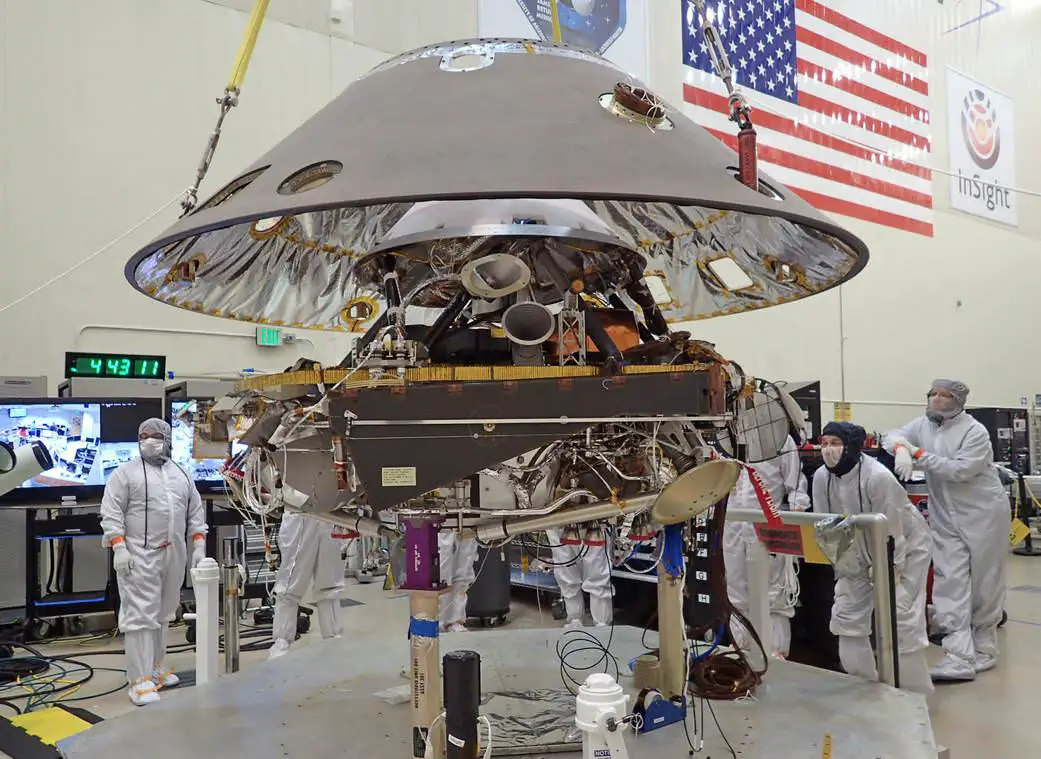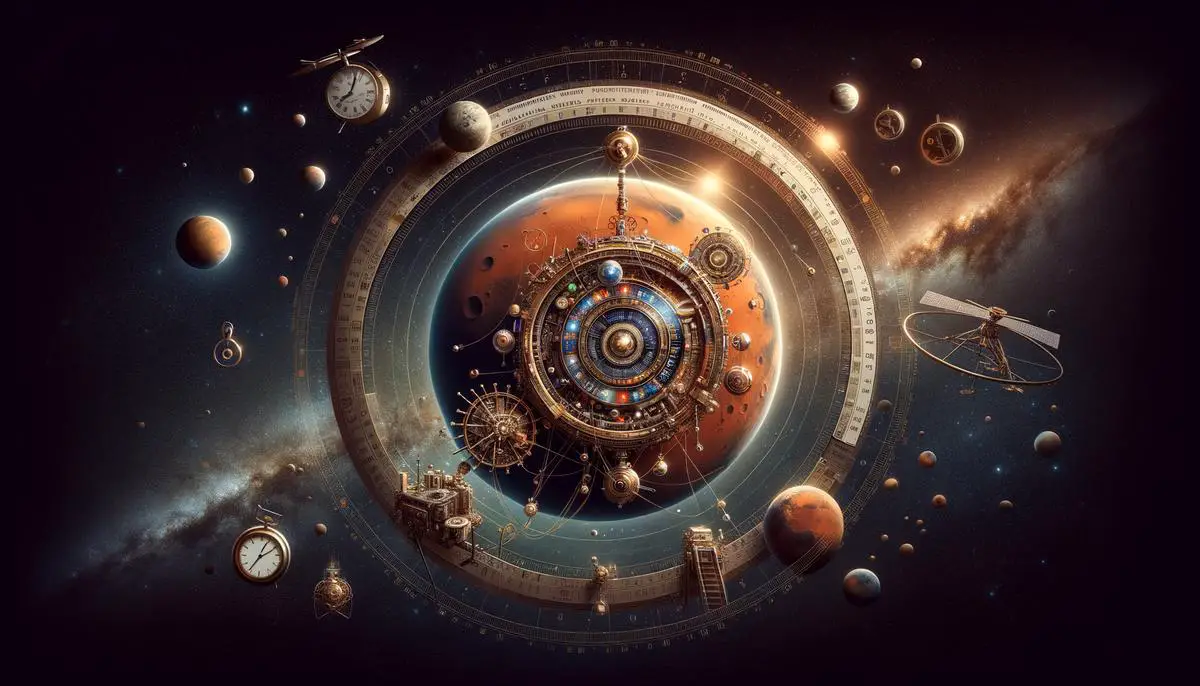Martian Sidereal and Solar Days
On Mars, a day isn't just a day. There are two types of days: the sidereal day and the solar day. A sidereal day on Mars lasts exactly 24 hours, 37 minutes, and 22 seconds. It's the time it takes Mars to complete one full rotation so that the stars appear in the same spot in the Martian night sky.
On the other hand, a solar day measures from one noon to the next. A solar day on Mars is longer—24 hours, 39 minutes, and 35 seconds. This difference arises because as Mars rotates on its axis, it's also orbiting around the Sun. Mars needs a bit more time to catch up to the Sun's position in the sky, extending the solar day slightly compared to the sidereal day.
Determining these measurements is a precise endeavor. To find the sidereal day, scientists track the planet's rotation in relation to distant stars. For the solar day, they observe the Sun's position. This distinction is vital for scientists planning missions or studying Mars' atmosphere and surface behaviors. Understanding the difference between these types of days helps to sync calendars, coordinate tasks, and interpret data accurately.
Comparison with Earth's Day Length
The Martian day—often referred to as a sol—is approximately 40 minutes longer than an Earth day. This proximity in day length makes Mars unique among planetary bodies in our Solar System when compared to Earth. It's an intriguing aspect that scientists find captivating.
To put this into perspective, contrast Mars' day with our neighboring planets.
- On Jupiter, a day is a mere 9 hours and 55 minutes, racing through its rotation with dizzying speed.
- Meanwhile, Venus takes a languorous 243 Earth days to complete just one rotation, resulting in days that are actually longer than its year.
These stark differences emphasize just how unusual Mars' almost Earth-like rhythm is.
This similarity matters for planning and adjusting to Martian time for missions and potential future human settlers. The 24-hour and 40-minute cycle on Mars feels considerably more familiar than other extraterrestrial time frames. This near match in day lengths ensures that circadian rhythms, which govern sleep and activity cycles for humans, would require minimal adaptation compared to the drastic changes required for life on a planet like Jupiter or Venus.
For robotic missions and eventual human explorers, syncing schedules between Earth and Mars operations becomes a somewhat less complicated task. Instruments and rovers do not need to undergo extensive recalibration for day-night cycles, and communications can maintain a practical level of synchronicity.
This extended Martian day affords scientists additional time for solar-powered missions, offering about 40 extra minutes of daylight to conduct experiments, power instruments, or gather data before nightfall. Such subtle variations extend valuable operational periods, aiding in the scientific quest to understand the Red Planet better.
The 40-minute difference between an Earth day and a sol connects our planetary dynamics in a way that feels almost serendipitous. It paves the way for a smoother transition for missions and furthers the tantalizing possibility of Martian colonization.

Measurement of Mars' Rotation Speed
Advancing our understanding of Mars' rotation speed has been accomplished through precision instruments and strategic methodologies. One of the most critical contributions to this field comes from NASA's InSight lander, specifically its Rotation and Interior Structure Experiment (RISE) instrument. The RISE instrument utilizes the interplay of radio wave signals to uncover subtle yet significant details about Mars' rotational dynamics.
The RISE methodology involves directing powerful radio signals from Earth to Mars. These signals, once received by the RISE instrument, are reflected back to Earth. This reflectance journey is subject to the Doppler effect, where the frequency of the returning radio waves shifts depending on Mars' position relative to Earth. As InSight rotates with Mars, the Doppler shift alters minutely, providing insights into the planet's rotation rate.
After carefully analyzing data from InSight's first 900 days on Mars, scientists detected that Mars' rotation is accelerating by approximately 0.76 milliseconds per year.1 While this change might appear minuscule, its implications are profound. Comparable to the way an ice skater spins faster by pulling in their arms, this acceleration could be linked to the redistribution of Mars' mass, possibly due to the accumulation of ice at the polar caps or the planet's surface rebounding from the weight of ancient glaciers.
These techniques have also been instrumental in measuring Mars' internal structure, particularly the size of its molten core. Tracking changes in the radio data, scientists have estimated Mars' core to have a diameter of approximately 2,280 miles.2 However, if part of the mantle is molten, this core might be up to 400 kilometers smaller than current estimates suggest. Such detailed measurements illuminate the intricacies of Mars' interior, offering clues about its geological history and evolution.
These insights into Mars' rotational behavior contribute to a dynamic understanding of how the planet's physical characteristics might change over time, affecting everything from the climate to potential habitability. This detailed knowledge helps engineers and mission planners create more precise models for future explorations, ensuring that landers and other equipment can function optimally under Martian conditions.
These intricate methods of measuring Mars' rotation underline the excitement of interplanetary exploration. Each incremental finding stitches together the broader story of Mars, bringing us closer to envisioning its ancient past and its potential as a future harbor for human life.

Impact of Mars' Rotation on Timekeeping
The impact of Mars' varying rotation speed on timekeeping presents a fascinating challenge and opportunity for future missions and potential colonization. Developing timekeeping systems that accommodate the subtle yet significant differences in Martian rotation is crucial for both practical and philosophical reasons.
The concept of a "sol," which defines a Martian solar day as 24 hours, 39 minutes, and 35 seconds, is central to Martian timekeeping. This near 40-minute extension compared to an Earth day necessitates the creation of clocks and calendars customized to Mars' unique rotational period. Given the established circadian rhythms and operational schedules tethered to Earth time, the transition to Martian time requires thoughtful adaptation.
One proposed method involves modifying Earth clocks to "run slower" to match the longer Martian day. By using a custom crystal in the clock's mechanism, Earth seconds, minutes, and hours can be recalibrated to stretch slightly, resulting in a timepiece that accurately reflects the sol's cycle. Such clocks would provide Martian settlers and mission planners with a familiar framework while respecting the Martian day's unique duration.
A more radical approach is to develop entirely new timekeeping units based on metric time, which might be more intuitive for life on Mars. For instance, a Martian day could be divided into 20 major units, each with 50 mini units, further subdividing into 100 micro units. This system would sidestep the difficulties of recalibrating Earth-based units, offering a straightforward means of measuring time specially designed for Mars.
In terms of calendars, accommodating Mars' approximately 669-sols year involves an intricate structure. A sample calendar has been proposed where the Martian year begins on the planet's Vernal Equinox, divided into 24 months of 27 or 28 sols each.3 This method mirrors the seasonal transitions familiar on Earth while factoring in the distinct lengths of Martian seasons.
To reconcile Martian time with Earth's, innovative leap sol strategies must be employed. Mars' year is roughly 668.6 sols, meaning adjustments are required to account for the excess fraction of a sol annually. Initial corrective measures suggest adding two sols every five years and an additional day every 300 years, ensuring the Martian calendar stays aligned with the planet's true year length.
To avoid confusion between Martian and Earth timekeeping—critical for synchronized communication and coordination—missions might adopt dual-time systems. Instruments and missions could maintain an Earth-standard timekeeping element while seamlessly transitioning to Martian time for operations on the Red Planet. This dual-time system allows for intuitive planning and operational coherence across interplanetary distances.
Looking at history, adjustments to timekeeping have profound cultural impacts. Earth's calendar reforms, like the shift from Julian to Gregorian calendars, underscore the importance and intricacy of aligning societal activities with astronomical realities. Mars offers a blank slate for setting these conventions, harmonizing human activities with its distinct environmental rhythms.
In summary, the intricacies of Mars' rotation yield fascinating possibilities for crafting customized timekeeping systems. From recalibrated Earth clocks to metric time systems and innovative calendar reforms, ensuring precise and practical timekeeping on Mars is pivotal. These efforts enhance logistical and operational efficiencies and pave the way for establishing a harmonious human presence on the Red Planet.
Mars Day Length and Human Colonization
The implications of Mars' day length extend beyond scientific curiosity and explore the practicalities of human colonization. As future pioneers set their sights on the Red Planet, they will need to adjust to the longer Martian days—a challenge that touches upon work schedules, sleep cycles, and the rhythms of daily life.
Adapting to a day that is nearly 40 minutes longer than Earth's is primarily a matter of synchronizing circadian rhythms. Human biology is remarkably adaptable; however, this consistency with Earth's 24-hour cycle has been embedded in our physiology for millennia. The introduction of a 24-hour and 40-minute day—the length of a sol—requires a recalibration of our internal clocks. Researchers have noted that the human body can adjust to day lengths that deviate slightly from the 24-hour standard, and Mars provides an almost perfect test case for this flexibility.
One critical aspect of this adjustment involves structuring work schedules that harmonize with the new day length. On Earth, work and rest cycles are typically based on an 8-hour workday, followed by leisure and sleep. On Mars, work schedules might extend incrementally, enabling colonists to maximize daylight hours without overwhelming the body's adaptation mechanisms.
Sleep cycles are another crucial element. The additional 40 minutes per day demand a reevaluation of the standard 8-hour sleep period. Humans might need longer sleep sessions or segmented sleep cycles to accommodate the longer days. Implementing innovative sleep aids, such as light therapy to simulate Martian sunrise and sunset, can help maintain a healthy sleep-wake cycle. Specially designed habitat lighting that mimics the subtle changes in natural light could enhance the settlers' comfort and well-being.
Daily activities, including meal times, recreational periods, and social interactions, would also require adjustment. Synchronizing these activities with the extended sol ensures that colonists remain productive and psychologically balanced. Nutritional schedules, for instance, could be designed to match Mars' day-night cycle, promoting optimal digestion and metabolism aligned with the new rhythm.
The infrastructure to keep precise time on Mars is equally vital. Deploying timekeeping systems that accurately reflect Martian days is fundamental for coordination and efficiency. Imagine wristwatches, clocks, and digital devices all calibrated to Martian time, offering consistency across various activities and fostering a cohesive colony environment. Such devices could include dynamic displays showing both Earth and Mars time for reference, reducing confusion for new arrivals and interplanetary communications.
Constructing habitats with controlled light environments can help regulate these new schedules. Smart lighting systems that simulate the Martian sol's more extended daylight and slightly longer nights can support the colony's health and productivity. Areas dedicated to relaxation or exercise would benefit from light sequences that keep occupants aligned with the Martian day-night cycle, thus preserving their circadian rhythm.
The transition into such a distinct timekeeping landscape mirrors our historical evolution of time systems on Earth. On Mars, settlers will embark on a new chapter of this chronology, creating a timekeeping culture that resonates with the unique celestial conditions of their new home.
In sum, the practical implications of Mars' longer days are both a challenge and an opportunity. From designing adaptable work and sleep schedules to developing sophisticated timekeeping and lighting technologies, the transition will rely on a blend of human adaptability and advanced engineering. These considerations are pivotal elements in fostering a thriving, sustainable colony on Mars. Embracing these changes with innovation and resilience will enable us to not only survive on the Red Planet but to thrive, marking another remarkable chapter in humanity's quest to explore and inhabit new worlds.

- Margot JL, Hauck SA II, Mazarico E, Padovan S, Peale SJ. Constraints on the internal structure and composition of Mars. Space Sci Rev. 2021;217(3):33.
- Yoder CF, Konopliv AS, Yuan DN, Standish EM, Folkner WM. Fluid core size of Mars from detection of the solar tide. Science. 2003;300(5617):299-303.
- Gangale T. MarsClock: a proposed Mars timekeeping system in three versions. Acta Astronaut. 2021;179:705-714.
![]()
